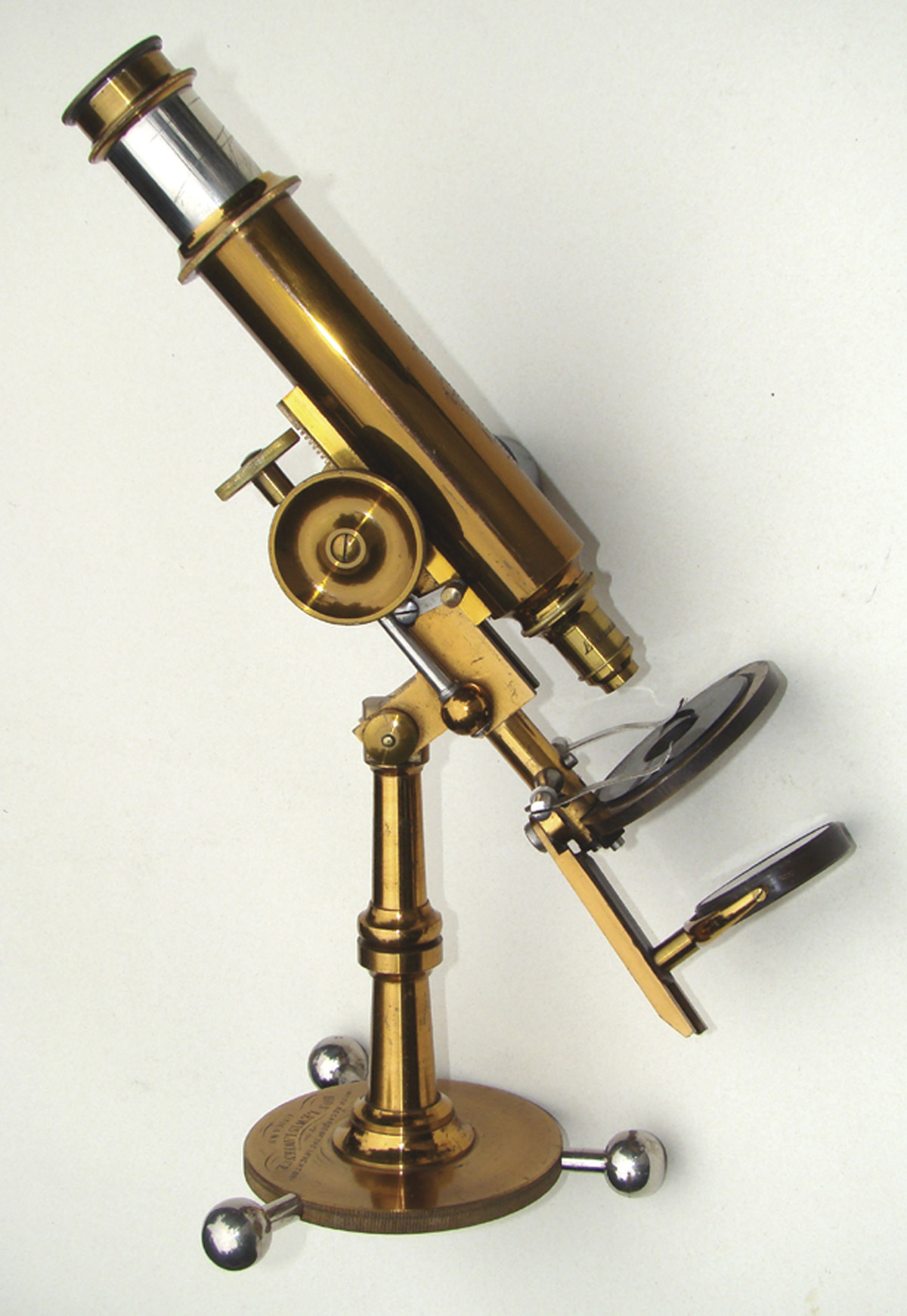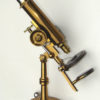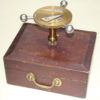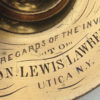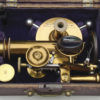IMPORTANT GRIFFITH CLUB PRESENTATION OUTFIT
Stock Number: 9096
$12,500.
For sale, important antique American microscope, the Griffith Club stand. The present stand would be his second form; Item 11 in Tesseract Catalogue 47 would be the third form. This "queen of grace and utility amongst microscopes" (as described in his award received at the Columbian Exhibition) was invented by Ezra Griffith of Fairport, N.Y. He made continual modifications and improvements in this innovative design, from its introduction in 1880 until his death in 1894, so there can be detailed variations throughout his production. The manufacture itself was apparently by Bausch & Lomb, then by Ernst Gundlach.
Dimensions
15-1/2
Circa
c,1881
Country of manufacture
North America
Description
IMPORTANT GRIFFITH CLUB PRESENTATION OUTFIT, American, c.1881, signed on the rotator/base with a fine presentation “With Regards of the Inventor, to Hon. Lewis Lawrence, Utica, N.Y”.; on the main tube “Griffith Club Microscope;” and on the objective “E. Gundlach.” The outfit stows compactly in its 7-3/4″ x 6″ x 3-1/2″ (20 x 15 x 9 cm) velvet lined wood case. Extending to a maximum height of 15-1/2″ (39 cm) when assembled, the microscope is made of golden lacquered brass with nickel plated fittings. A lever-operated cam acts against a spring to engage the unusual worm and ring gear fine focus action. This unusual instrument is equipped with one ocular, one Gundlach objective, black glass stage with synchronized slide clips, and swinging substage with double mirror, but no condenser provision, allowing extremely oblique lighting both above and below stage. The mirror cell is gutta percha, as employed in early Gundlach designs. The microscope stands on three ball feet to a tapered pillar, with hinged joint 5-1/2″ off the table top. This pillar breaks down to permit direct mounting of the microscope to a table, and inverted use of the base as a slide preparation turntable, complete with its adjustable triangular slide grips (see illustration in Padgitt, p. 117). Condition is excellent, with the exquisite original golden lacquer finish.
The evolution of the Griffith Club stand is discussed by R.D. Watson in Rittenhouse 9, 25. The present stand would be his second form; Item 11 in Tesseract Catalogue 47 would be the third form. This “queen of grace and utility amongst microscopes” (as described in his award received at the Columbian Exhibition) was invented by Ezra Griffith of Fairport, N.Y. He made continual modifications and improvements in this innovative design, from its introduction in 1880 until his death in 1894, so there can be detailed variations throughout his production. The manufacture itself was apparently by Bausch & Lomb, then by Ernst Gundlach.
Griffith was a passionate amateur microscopist, and engaged many members of microscopy clubs in the U.S. and abroad (and thus the “Club” microscope). The recipient of the present splendid example, the only such inventor’s presentation recorded, was Lewis Lawrence (1806 -1886), prominent businessman of Utica, with interests in lumber, building construction, roads and railroads. Lawrence seems to have been a truly good man, generous and respectful, a dedicated abolitionist, wealthy but unostentatious. His behavior gained him the informal title “Honorable.” Having built up his businesses from scratch, he was a master organizer of the funding and execution of large projects. In just one example of logging he bought a large tract in Oswego Country, hired 600 “clean-living” new immigrants in New York City, organized them efficiently, and sent out 280 cords of wood (2-1/2 acres worth) by rail daily. Included with this splendid microscope is the interesting book Lewis Lawrence by T.J. Brown (1887), with its fine steel engraving of Honorable Lawrence.
An important example of this uniquely American microscope.
Ask the Dealer
Dealer information
 TESSERACT
TESSERACT
David and Yola Coffeen both have enjoyed academic careers, as planetary astronomer and as linguist/educator. But since 1982 (yes, 1982!) they have been full-time dealers in early scientific and medical instruments, under the name Tesseract. Selling primarily by catalogue (over 100 issued so far) they also have a web presence at www.etesseract.com, and can be contacted at [email protected].




